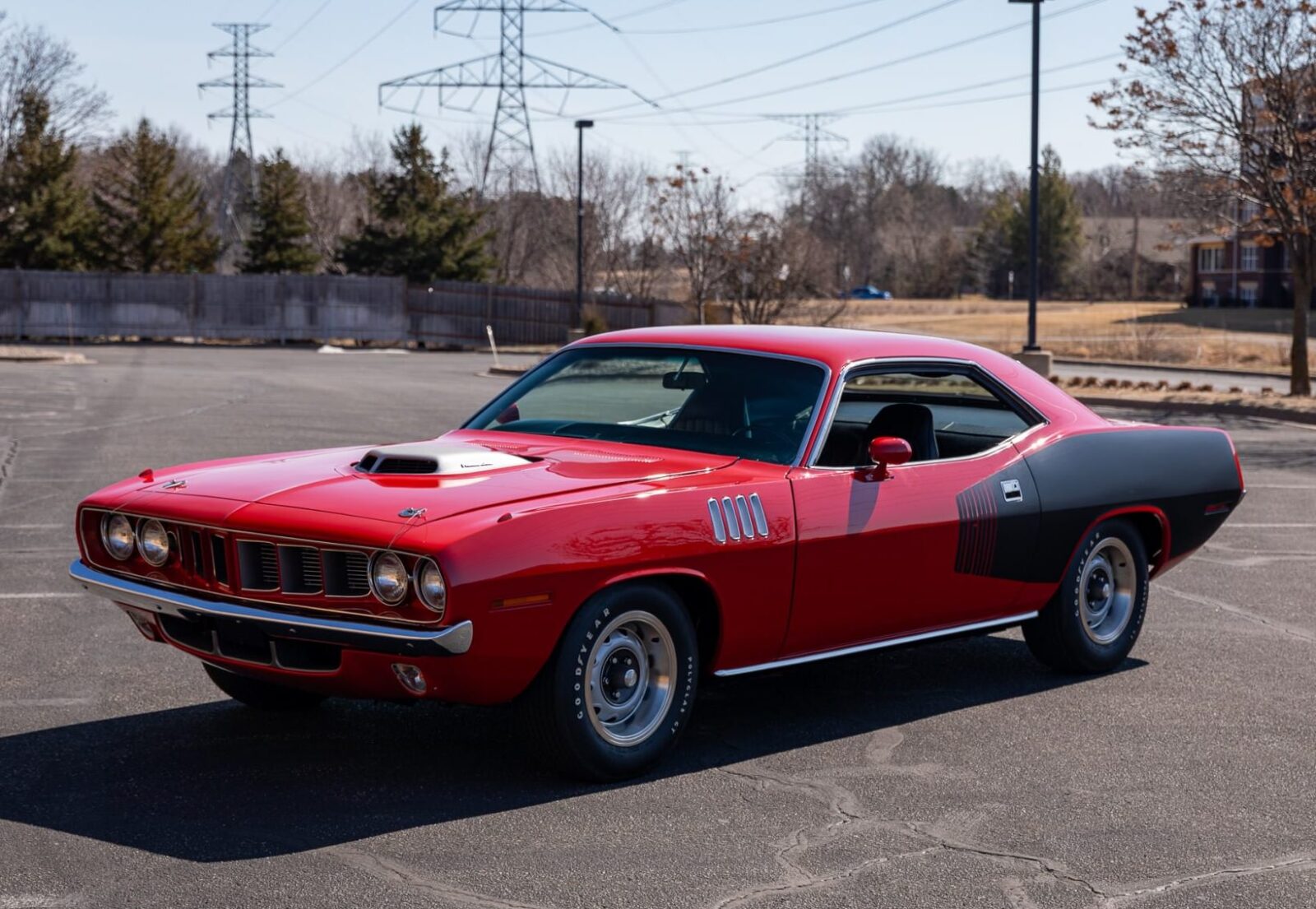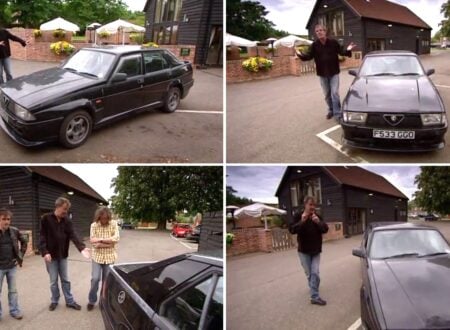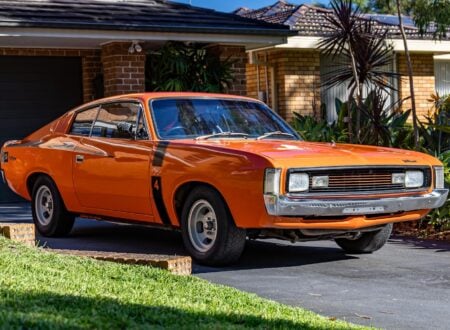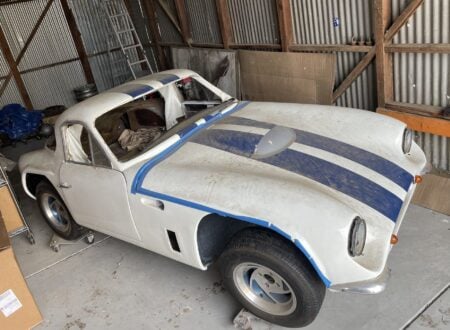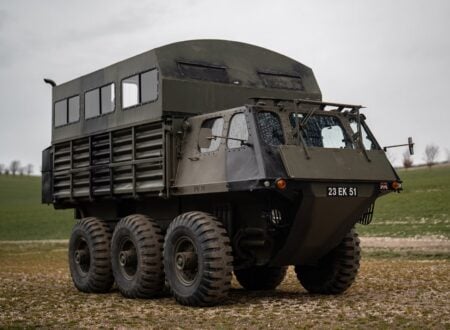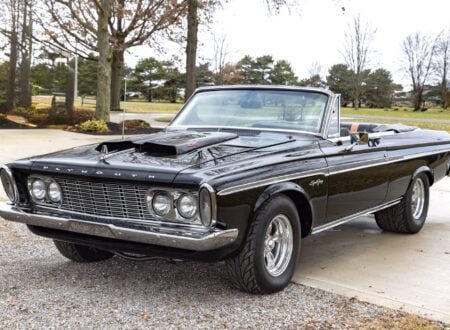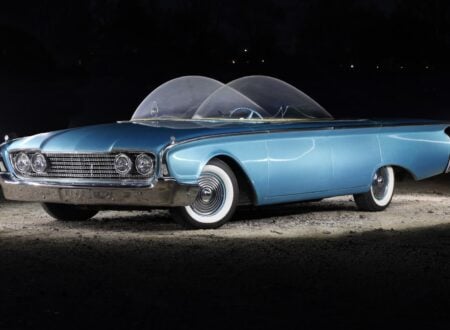This 1971 Plymouth Hemi Cuda has the unusual historic distinction of being the only export model ever delivered new to Europe.
It was raced in Scandinavian motorsport in-period, and it likely did quite well thanks to that 426/425 bhp Hemi V8 under the hood. It has now been given a comprehensive restoration by marque specialist Lloyd Lind, and it retains its matching numbers drivetrain.
Fast Facts – The 1971 Plymouth Hemi Cuda
- The 1971 Plymouth Hemi Cuda is highly collectible due to its short production run (1970 to 1971), iconic 426 cubic-inch Hemi V8, and low production numbers, with fewer than 300 units produced in 1971. It featured a hemispherical combustion chamber V8 inspired by WWII aero-engines, conservatively rated at 425 bhp and capable of 0 to 60 mph in 5.5 seconds.
- The 1971 Hemi Cuda shown in this article is historically unique as the only export model ever delivered new to Europe. It competed successfully in Scandinavian motorsport events and has undergone a meticulous restoration by marque specialist Lloyd Lind, retaining its original matching-numbers drivetrain, including the highly-desirable 4-speed manual transmission with a distinctive Pistol Grip shifter.
- The third-generation Barracuda, introduced in 1970 on the E-body platform shared with the Dodge Challenger, marked the peak of Plymouth’s muscle car era. It was designed specifically to accommodate Chrysler’s most powerful engines. Notable visual distinctions included vibrant “High Impact” paint colors and the famous shaker hood scoop.
- Today, genuine Hemi Cudas command increasingly eye-brow raising prices at auctions, especially restored and historically documented examples. The car featured here, finished in Red with Black Hemi billboards, leather interior, unique 240 km/h speedometer, and rallye gauges, is expected to fetch between $550,000 and $650,000 USD at the upcoming Mecum auction.
History Speedrun: The Plymouth Hemi Cuda
The Plymouth Hemi Cuda is one of the most collectible American vehicles from the golden age of the muscle car. It was only built during a brief period, from 1970 to 1971, but despite this short production cycle it represents a high-water mark for Chrysler’s Plymouth division, primarily due to its 426 cubic inch Hemi V8, which was conservatively rated at a 425 bhp.
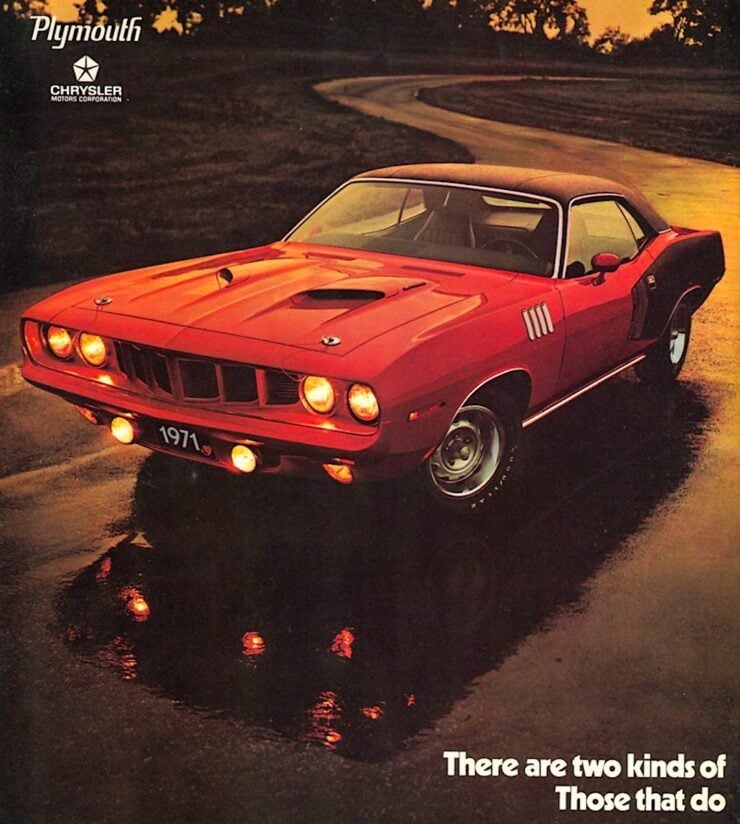

The Hemi Cuda’s origins trace back to the broader Plymouth Barracuda line which debuted in 1964 as a sporty fastback derivative of the Plymouth Valiant. Initially positioned as an affordable, sports car rather than an all-out muscle machine, the Barracuda would evolve significantly over its first two generations (1964 – 1966, and then 1967 – 1969).
It was the third-generation Barracuda, introduced in 1970, that really captured the essence of the muscle car era, particularly when equipped with that formidable Hemi V8. In developing the 1970 model, Plymouth engineers dramatically revised the Barracuda platform.
Known internally as the E-body, this architecture was wider and shorter than previous iterations, sharing components with its corporate sibling, the Dodge Challenger. Plymouth’s intent was clear – to create a platform capable of housing Chrysler’s largest and most powerful engines, catering directly to the surging demand for high-performance American muscle cars and beating the competition soundly in the process.
The Mighty 426 Hemi V8
The 426 cubic inch (7.0 liter) Hemi V8 was originally conceived in the 1960s for NASCAR racing and 1/4 mile drag-strip domination, Chrysler’s hemispherical combustion chamber design was said to have been inspired by WWII aero-engine designs.
The hemispherical combustion chamber allowed for larger intake and exhaust valves positioned opposite each other, facilitating rapid gas flow in and out of the cylinders.
The engine produced power that was astonishing by contemporary standards and still respectable today – factory-rated at 425 bhp and 490 lb ft of torque, although many enthusiasts believe these numbers were conservative. It wasn’t unheard of for manufacturers to understate numbers to appease insurers and government regulators.
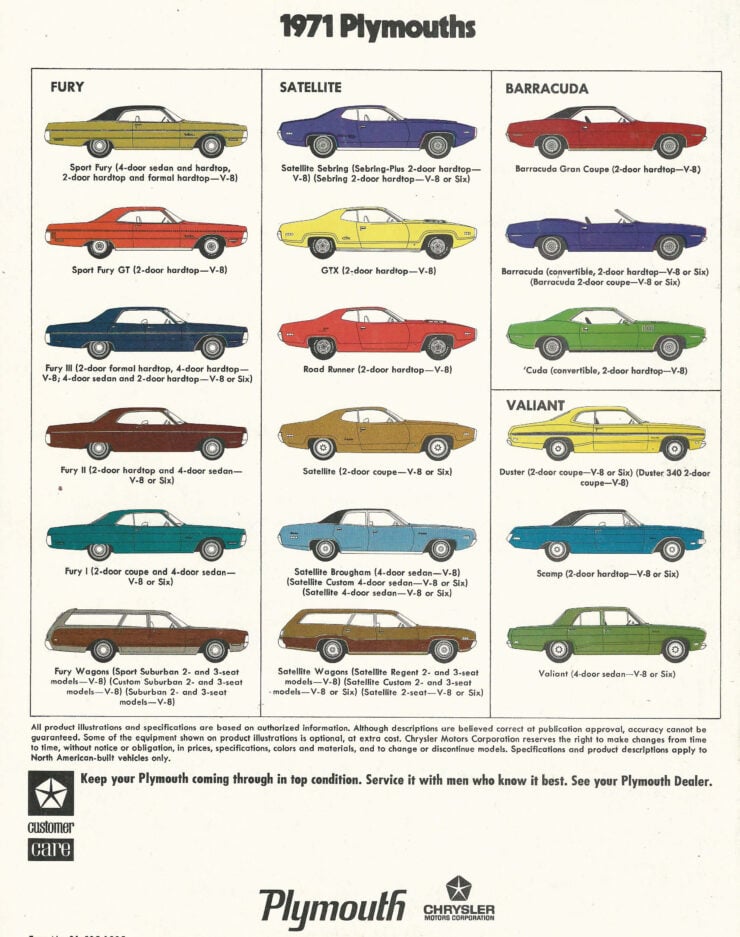

When equipped with the Hemi V8, the Cuda was a fierce performer – it could accelerate from 0 – 60 mph in just 5.5 seconds, cover the quarter-mile in approximately 13.5 seconds, and easily surpass 140 mph – making it one of the quickest American cars of its time.
Racing (And Handling)
Handling characteristics from the factory were somewhat typical of the era’s muscle cars – straight-line speed took precedence over cornering, with steering and a suspension calibrated for 1/4 mile straight lines rather than winding roads. Suspension consisted of an independent front end with a torsion bar and a sway bar, and a live axle rear on leaf springs – a relatively common arrangement for the time.
That said, the race teams and speed shops of the day could rework the suspension and vastly improve handling, as was demonstrated by Swede Savage and Dan Gurney who raced Cudas in the 1970 Trans-Am Series with some notable successes.
Transmission options for the Hemi Cuda included a heavy-duty 4-speed manual or Chrysler’s 3-speed TorqueFlite automatic. Both options could effectively handle the torque from the 426 Hemi, but the 4-speed manual was particularly favored among purists, offering greater driver engagement. As a result, manual cars today tend to fetch slightly higher prices at auction.
Plymouth made a point of setting the Hemi Cuda apart from other Barracuda variants visually. The “shaker” hood scoop, which rose up through a cutout in the hood and visibly shook with engine vibration at idle, became one of the defining characteristics of the model.
Graphics and colors were bold and eye-catching, with “High Impact” shades like “Plum Crazy,” “Vitamin C,” and “In Violet” making these cars recognizable even from some distance.
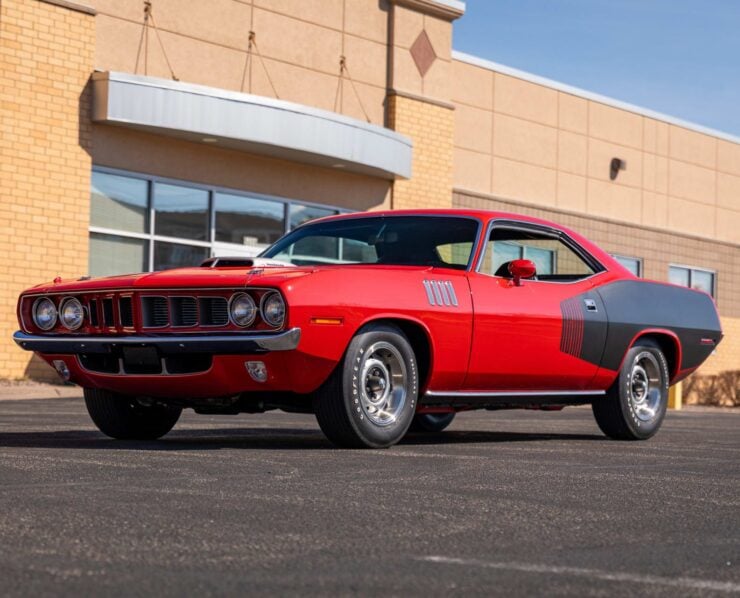

Production Numbers And Collectibility
Low production numbers contributed to the Hemi Cuda’s borderline-mythical legacy – between 1970 and 1971, Plymouth produced fewer than 800 Hemi V8-equipped Barracudas, making genuine Hemi Cudas exceedingly rare.
Of those, fewer than 300 were built in 1971, the final and most sought-after year. This limited production, combined with the storied performance of the 426 Hemi engine, has driven collector values into the millions for pristine, well-documented examples.
Today, authentic Hemi Cudas hold a revered position with muscle car collectors and automotive enthusiasts. Auction results consistently show their desirability, with original-condition cars achieving sometimes shockingly high prices – especially those with documented histories, matching-numbers drivetrains, and/or rare color combinations.
The 1971 Plymouth Hemi Cuda Shown Here
The car you see here is a numbers-matching 1971 Plymouth Hemi Cuda with the correct 426/425 bhp Hemi V8 and the correct 4-speed manual transmission in place. The car has been given a comprehensive restoration by marque specialist Lloyd Lind, and it’s one of just 60 examples with the Pistol Grip shifter.
It’s finished with a Red exterior with Black Hemi billboards and a Black leather interior with “simulated” wood grain trim and a rallye panel. It has bucket seats, a tachometer, a unique radio delete plate, a clock, and a highly-unusual 240 km/h speedometer.
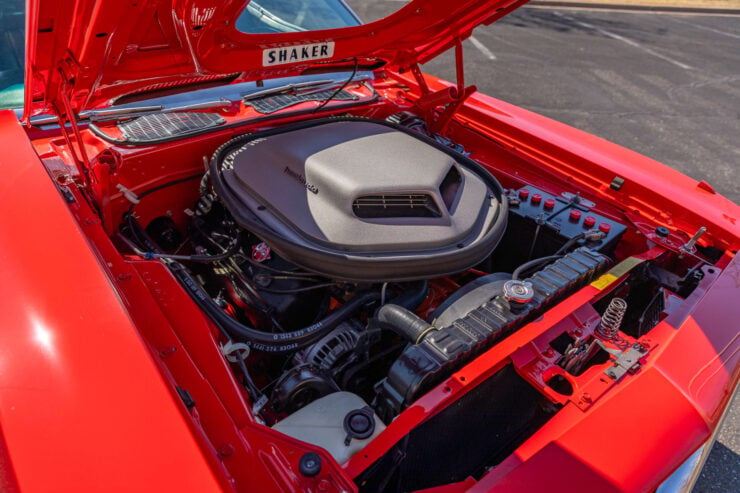

As mentioned in the introduction, this Hemi Cuda is historically notable for being the sole export model delivered new to Europe. It was driven in-period at prominent Scandinavian racing events, and this history will make it particularly interesting to collectors.
The car is now due to roll across the auction block with Mecum in mid-May with a price guide of $550,000 – $650,000 USD. If you’d like to read more about it or place a bid you can visit the listing here.
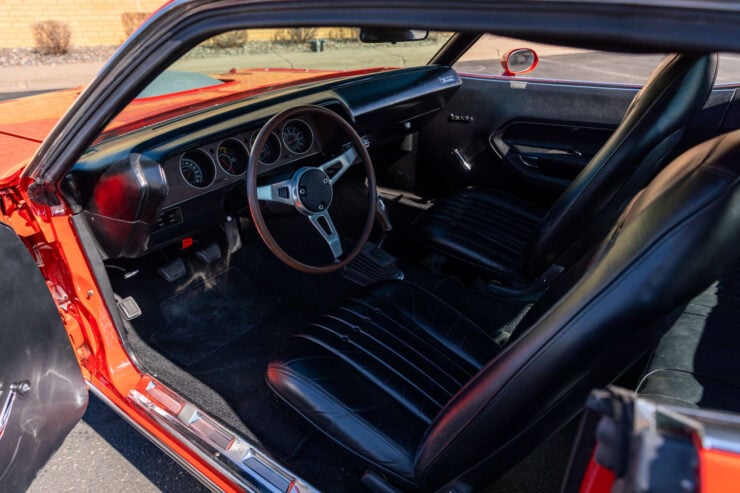

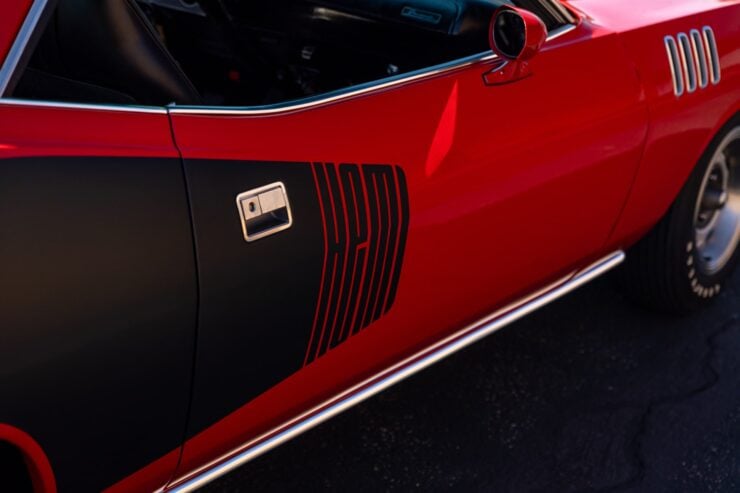
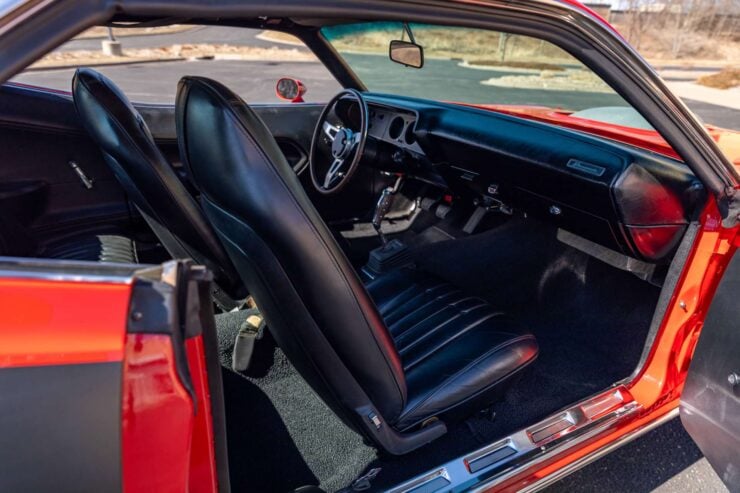
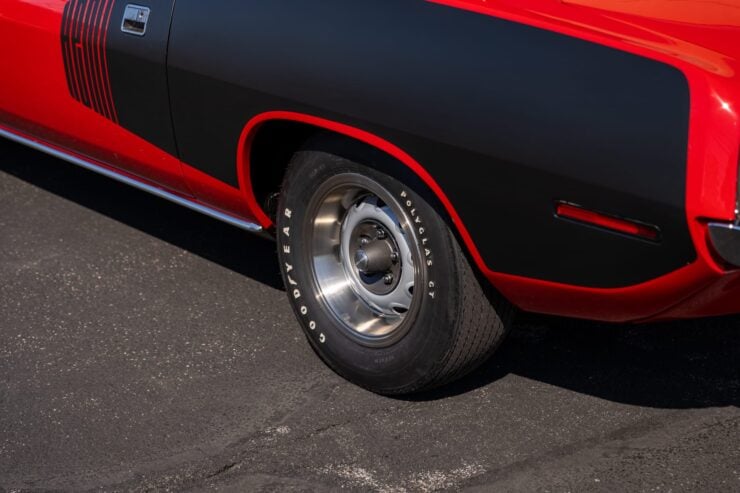

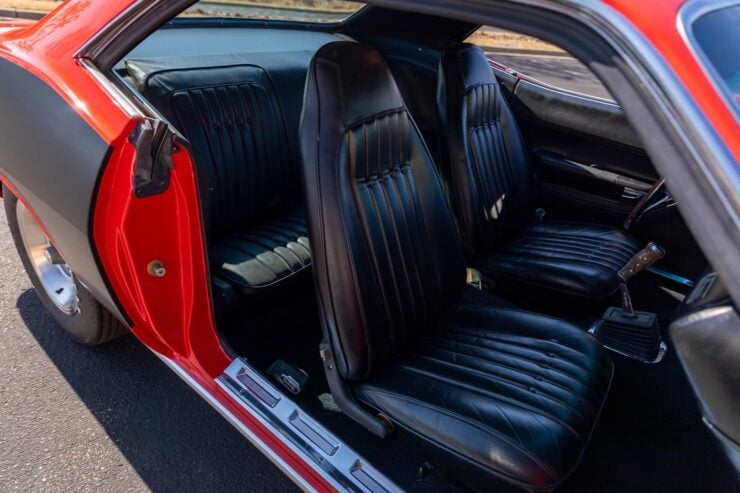
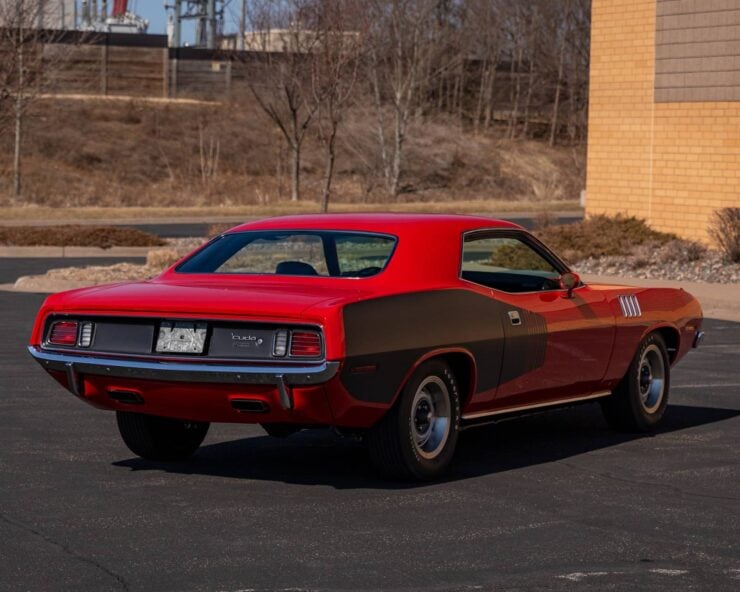
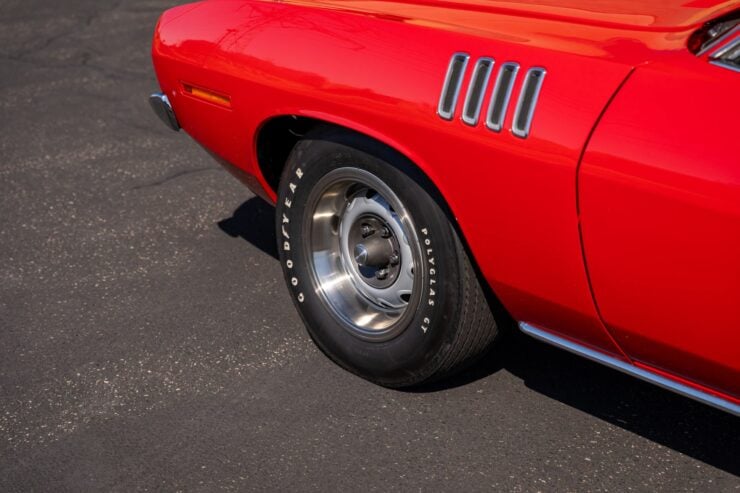
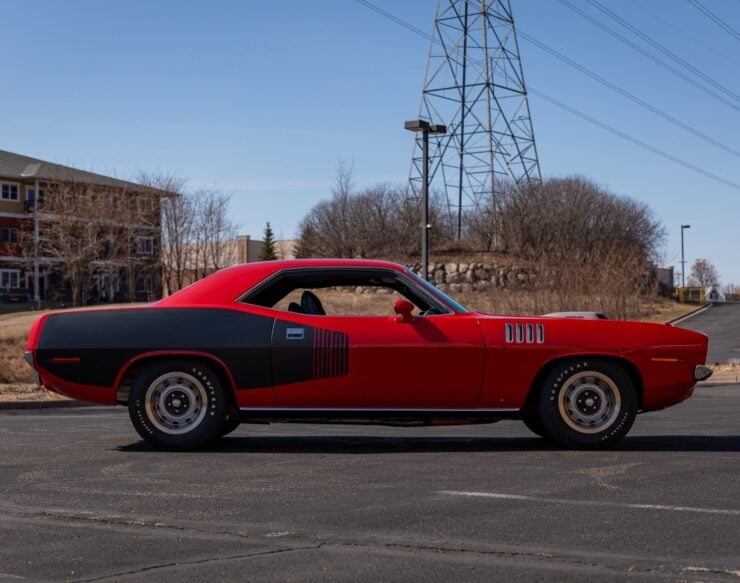
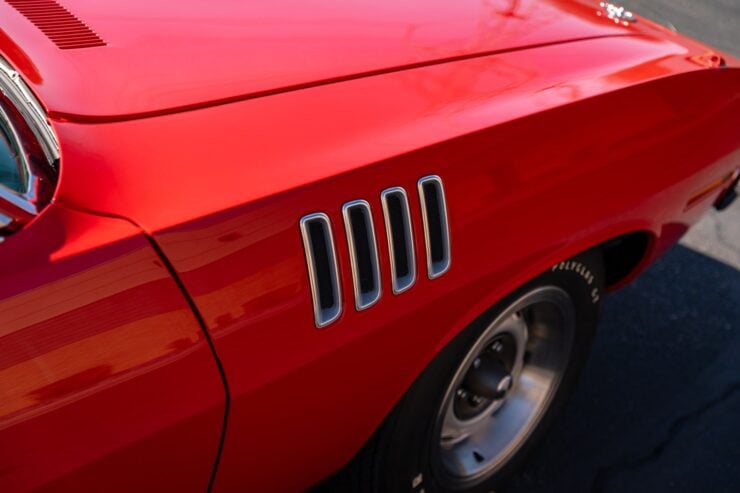
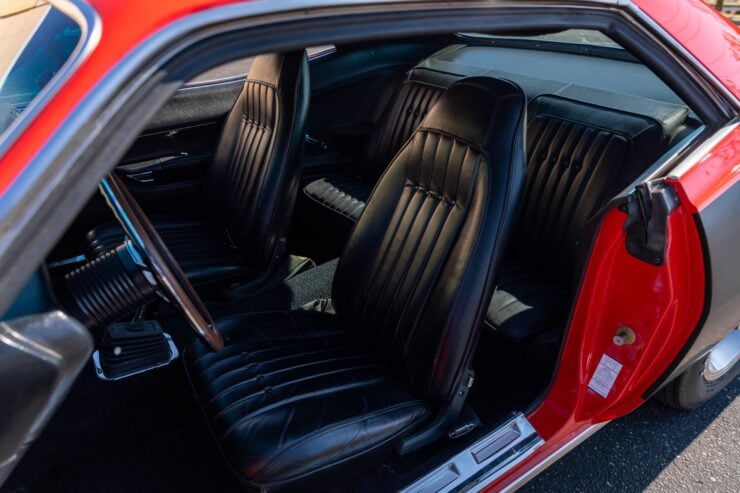
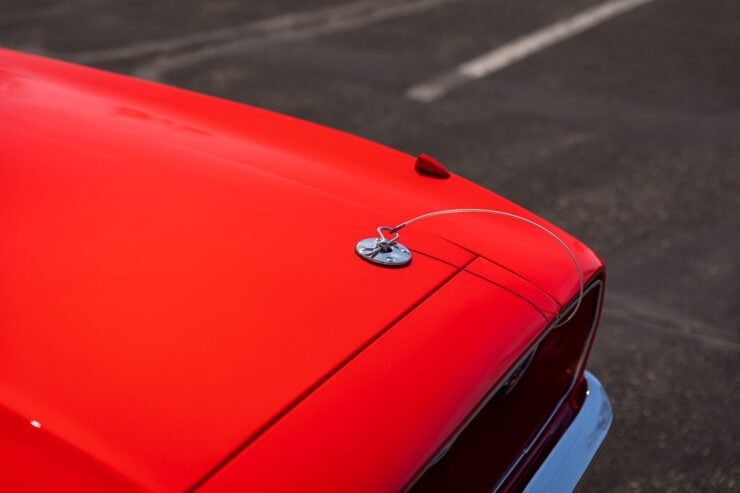
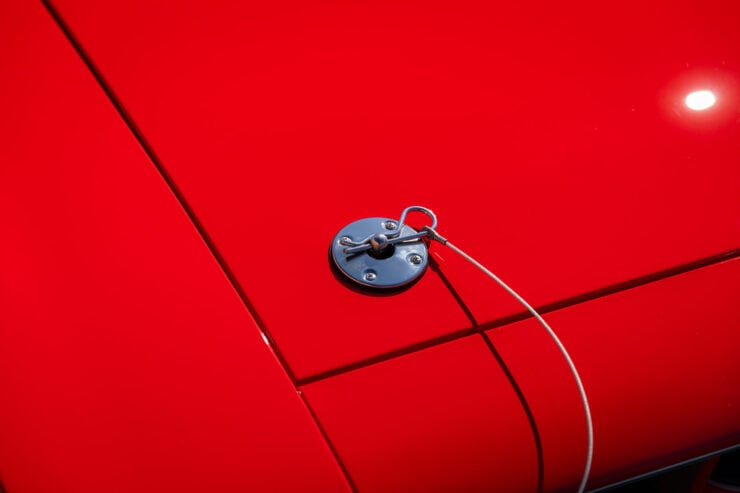
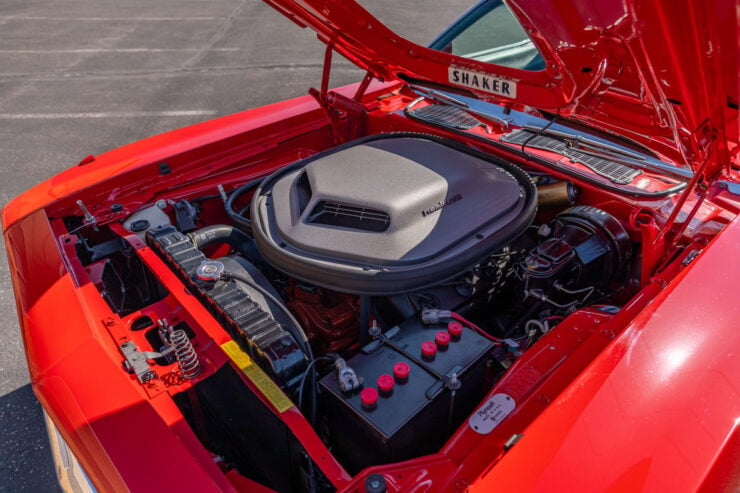
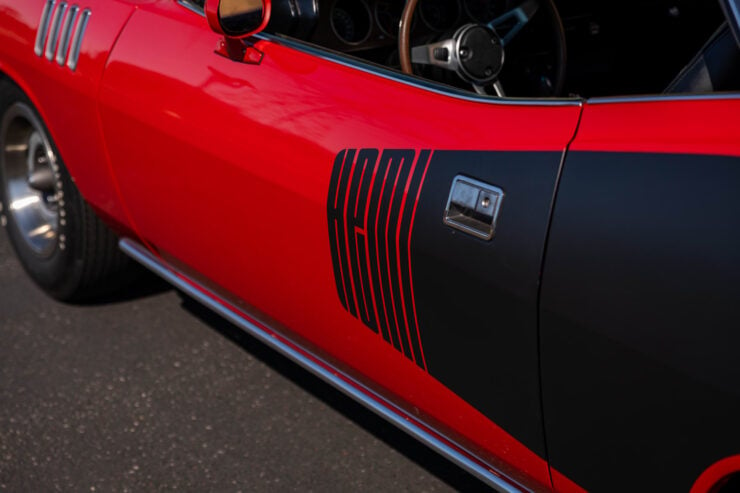
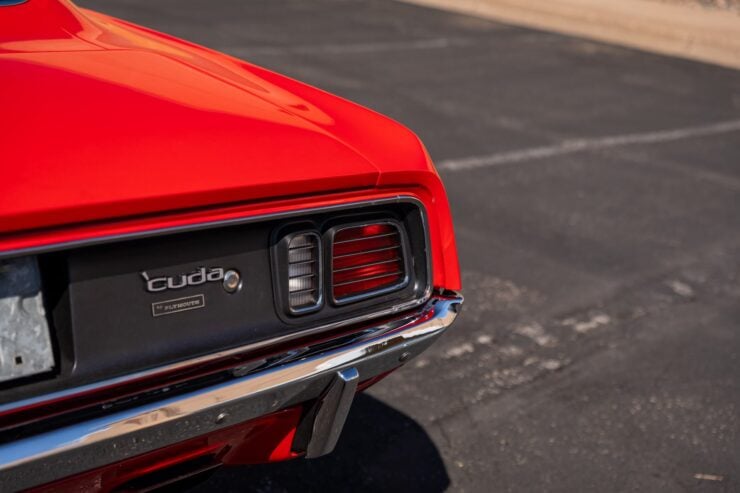
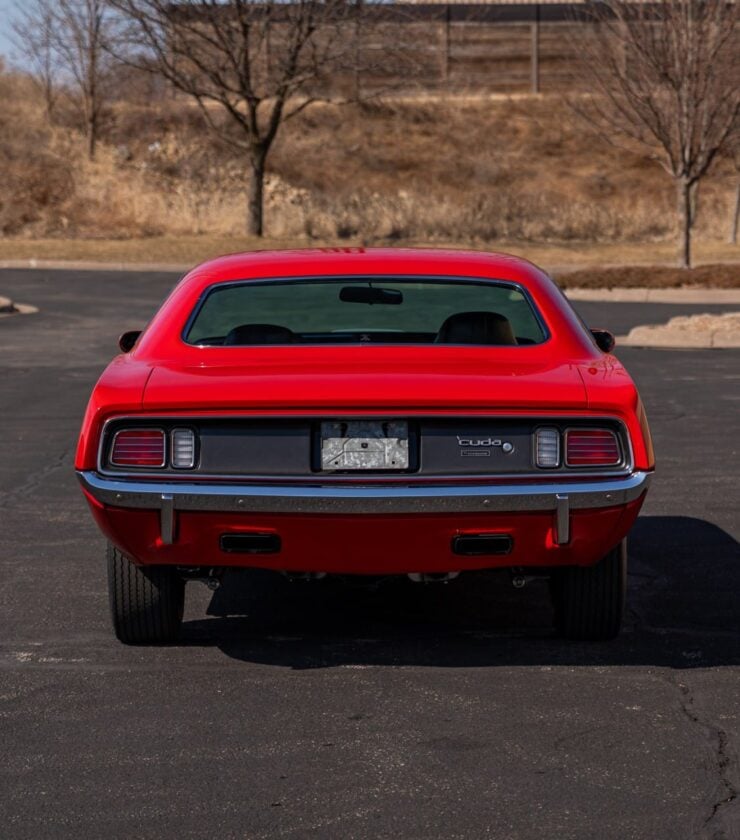
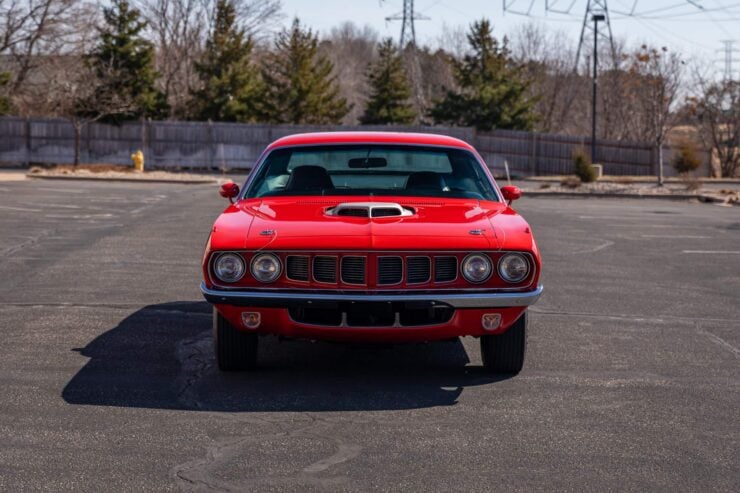
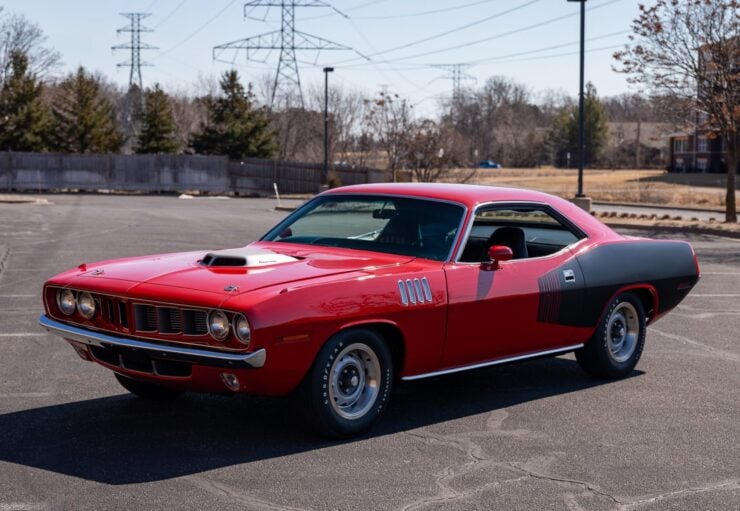
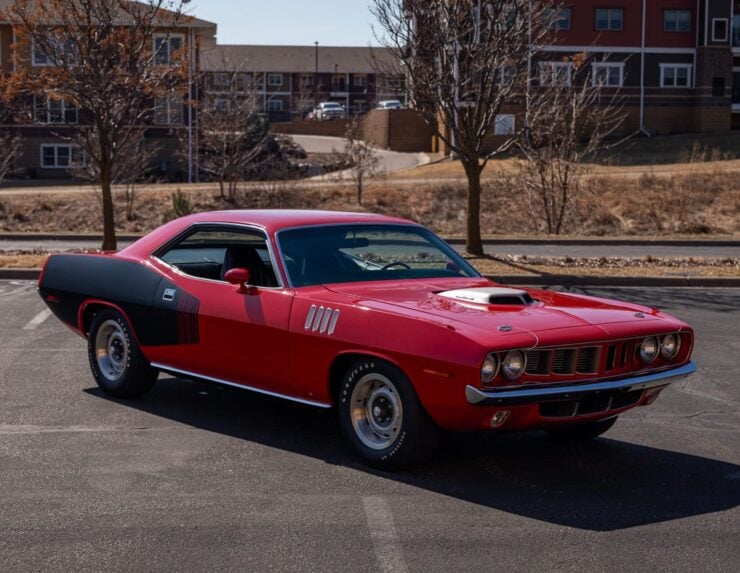
Images courtesy of Mecum

